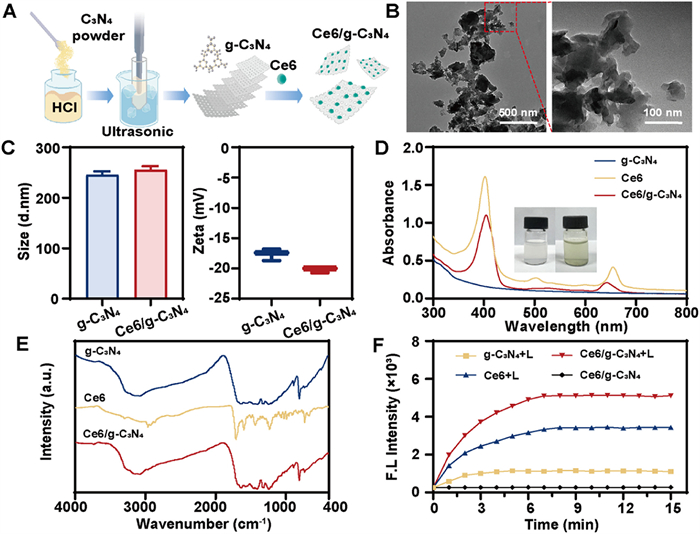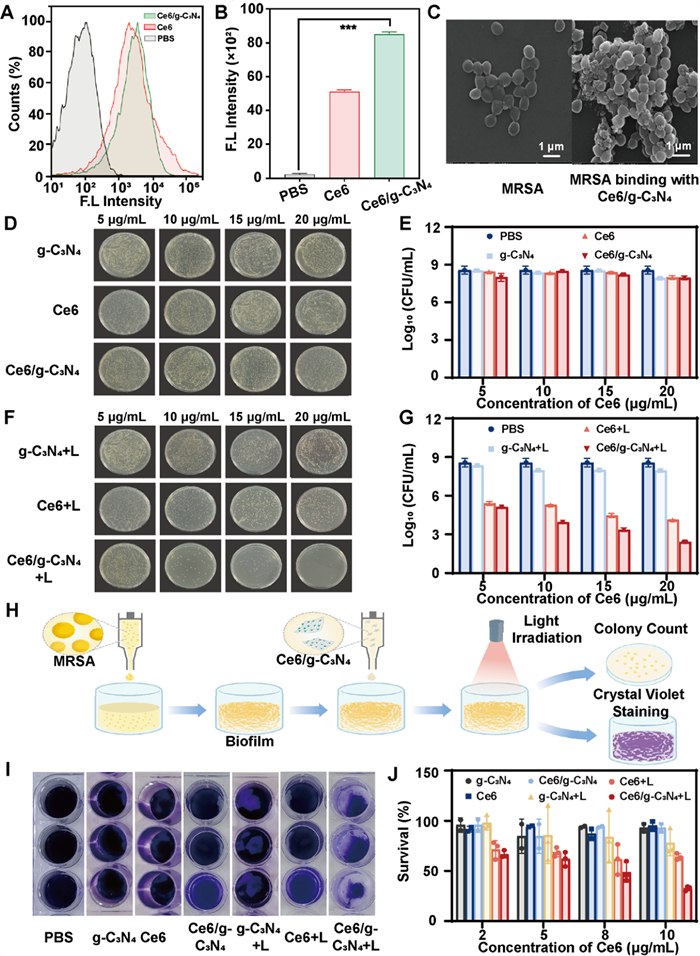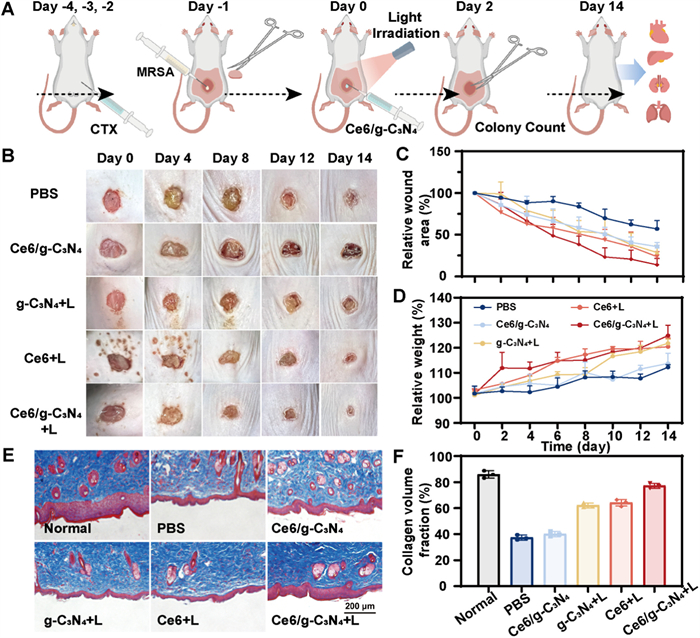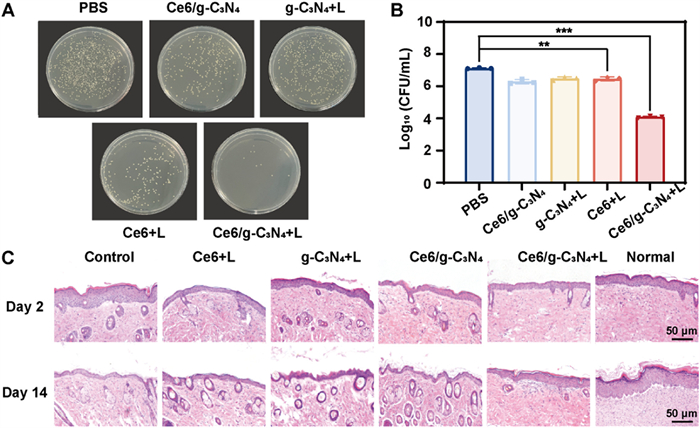-
[1]
Yuyao Guan
, Baoting Yu
, Jun Ding
, Tingting Sun
, Zhigang Xie
. BODIPY photosensitizers for antibacterial photodynamic therapy. Chinese Chemical Letters,
2025, 36(8): 110645-.
doi: 10.1016/j.cclet.2024.110645
-
[2]
Qihang Wu
, Hui Wen
, Wenhai Lin
, Tingting Sun
, Zhigang Xie
. Alkyl chain engineering of boron dipyrromethenes for efficient photodynamic antibacterial treatment. Chinese Chemical Letters,
2024, 35(12): 109692-.
doi: 10.1016/j.cclet.2024.109692
-
[3]
Du Liu
, Yuyan Li
, Hankun Zhang
, Benhua Wang
, Chaoyi Yao
, Minhuan Lan
, Zhanhong Yang
, Xiangzhi Song
. Three-in-one erlotinib-modified NIR photosensitizer for fluorescence imaging and synergistic chemo-photodynamic therapy. Chinese Chemical Letters,
2025, 36(2): 109910-.
doi: 10.1016/j.cclet.2024.109910
-
[4]
Xiangrong Pan
, Xixi Hou
, Yuhang Du
, Zhixin Pang
, Shiyang He
, Lan Wang
, Jianxue Yang
, Longfei Mao
, Jianhua Qin
, Haixia Wu
, Baozhong Liu
, Zhan Zhou
, Lufang Ma
, Chaoliang Tan
. Solvent-mediated synthesis of 2D In-TCPP MOF nanosheets for enhanced photodynamic antibacterial therapy. Chinese Chemical Letters,
2025, 36(12): 110536-.
doi: 10.1016/j.cclet.2024.110536
-
[5]
Liang Ma
, Zhou Li
, Zhiqiang Jiang
, Xiaofeng Wu
, Shixin Chang
, Sónia A. C. Carabineiro
, Kangle Lv
. Effect of precursors on the structure and photocatalytic performance of g-C3N4 for NO oxidation and CO2 reduction. Chinese Journal of Structural Chemistry,
2024, 43(11): 100416-100416.
doi: 10.1016/j.cjsc.2024.100416
-
[6]
Zhe Li
, Ping-Zhao Liang
, Li Xu
, Fei-Yu Yang
, Tian-Bing Ren
, Lin Yuan
, Xia Yin
, Xiao-Bing Zhang
. Three positive charge nonapoptotic-induced photosensitizer with excellent water solubility for tumor therapy. Chinese Chemical Letters,
2024, 35(8): 109190-.
doi: 10.1016/j.cclet.2023.109190
-
[7]
Feng Cui
, Fangman Chen
, Xiaochun Xie
, Chenyang Guo
, Kai Xiao
, Ziping Wu
, Yinglu Chen
, Junna Lu
, Feixia Ruan
, Chuanxu Cheng
, Chao Yang
, Dan Shao
. Scalable production of mesoporous titanium nanoparticles through sequential flash nanocomplexation. Chinese Chemical Letters,
2024, 35(4): 108681-.
doi: 10.1016/j.cclet.2023.108681
-
[8]
Kai Han
, Guohui Dong
, Ishaaq Saeed
, Tingting Dong
, Chenyang Xiao
. Morphology and photocatalytic tetracycline degradation of g-C3N4 optimized by the coal gangue. Chinese Journal of Structural Chemistry,
2024, 43(2): 100208-100208.
doi: 10.1016/j.cjsc.2023.100208
-
[9]
Chao-Long Chen
, Rong Chen
, La-Sheng Long
, Lan-Sun Zheng
, Xiang-Jian Kong
. Anchoring heterometallic cluster on P-doped carbon nitride for efficient photocatalytic nitrogen fixation in water and air ambient. Chinese Chemical Letters,
2024, 35(4): 108795-.
doi: 10.1016/j.cclet.2023.108795
-
[10]
Wei Su
, Xiaoyan Luo
, Peiyuan Li
, Ying Zhang
, Chenxiang Lin
, Kang Wang
, Jianzhuang Jiang
. Phthalocyanine self-assembled nanoparticles for type Ⅰ photodynamic antibacterial therapy. Chinese Chemical Letters,
2024, 35(12): 109522-.
doi: 10.1016/j.cclet.2024.109522
-
[11]
Yiling Li
, Zekun Gao
, Xiuxiu Yue
, Minhuan Lan
, Xiuli Zheng
, Benhua Wang
, Shuang Zhao
, Xiangzhi Song
. FRET-based two-photon benzo[a] phenothiazinium photosensitizer for fluorescence imaging-guided photodynamic therapy. Chinese Chemical Letters,
2024, 35(7): 109133-.
doi: 10.1016/j.cclet.2023.109133
-
[12]
Haoran Hou
, Siwen Wei
, Yutong Shao
, Yingnan Wu
, Gaobo Hong
, Jing An
, Jiarui Tian
, Jianjun Du
, Fengling Song
, Xiaojun Peng
. A 690-nm-excitable type Ⅰ & Ⅱ photosensitizer based on biotinylation of verteporfin for photodynamic therapy of deep-seated orthotopic breast tumors. Chinese Chemical Letters,
2025, 36(6): 110315-.
doi: 10.1016/j.cclet.2024.110315
-
[13]
Hao Cai
, Xiaoyan Wu
, Lei Jiang
, Feng Yu
, Yuxiang Yang
, Yan Li
, Xian Zhang
, Jian Liu
, Zijian Li
, Hong Bi
. Lysosome-targeted carbon dots with a light-controlled nitric oxide releasing property for enhanced photodynamic therapy. Chinese Chemical Letters,
2024, 35(4): 108946-.
doi: 10.1016/j.cclet.2023.108946
-
[14]
Quanxin Ning
, Yidan Zhang
, Huayi Sun
, Xin Zhao
, Haodong Zhang
, Feng Cui
, Xiaochun Xie
, Fangman Chen
, Wen Sun
, Hong Zhang
. Light-harvesting pigment-binding protein-mimicking carbon dots for photodynamic therapy. Chinese Chemical Letters,
2025, 36(11): 111133-.
doi: 10.1016/j.cclet.2025.111133
-
[15]
Yuhao Ma
, Yufei Zhou
, Mingchuan Yu
, Cheng Fang
, Shaoxia Yang
, Junfeng Niu
. Covalently bonded ternary photocatalyst comprising MoSe2/black phosphorus nanosheet/graphitic carbon nitride for efficient moxifloxacin degradation. Chinese Chemical Letters,
2024, 35(9): 109453-.
doi: 10.1016/j.cclet.2023.109453
-
[16]
Haijun Shen
, Yi Qiao
, Chun Zhang
, Yane Ma
, Jialing Chen
, Yingying Cao
, Wenna Zheng
. A matrix metalloproteinase-sensitive hydrogel combined with photothermal therapy for transdermal delivery of deferoxamine to accelerate diabetic pressure ulcer healing. Chinese Chemical Letters,
2024, 35(12): 110283-.
doi: 10.1016/j.cclet.2024.110283
-
[17]
Hongwei Ding
, Jingjing Yang
, Yongchen Shuai
, Di Wei
, Xueliang Liu
, Guiying Li
, Lin Jin
, Jianliang Shen
. In situ preparation of tannin-mediated CeO2@CuS nanocomposites for multimodal wound therapy. Chinese Chemical Letters,
2025, 36(6): 110286-.
doi: 10.1016/j.cclet.2024.110286
-
[18]
Yupeng Liu
, Hui Wang
, Songnan Qu
. Review on near-infrared absorbing/emissive carbon dots: From preparation to multi-functional application. Chinese Chemical Letters,
2025, 36(5): 110618-.
doi: 10.1016/j.cclet.2024.110618
-
[19]
Yue Ren
, Kang Li
, Yi-Zi Wang
, Shao-Peng Zhao
, Shu-Min Pan
, Haojie Fu
, Mengfan Jing
, Yaming Wang
, Fengyuan Yang
, Chuntai Liu
. Swelling and erosion assisted sustained release of tea polyphenol from antibacterial ultrahigh molecular weight polyethylene for joint replacement. Chinese Chemical Letters,
2025, 36(2): 110468-.
doi: 10.1016/j.cclet.2024.110468
-
[20]
Xicheng Li
, Dong Mo
, Shoushan Hu
, Meng Pan
, Meng Wang
, Tingyu Yang
, Changxing Qu
, Yujia Wei
, Jianan Li
, Hanzhi Deng
, Zhongwu Bei
, Tianying Luo
, Qingya Liu
, Yun Yang
, Jun Liu
, Jun Wang
, Zhiyong Qian
. A Pt@ZIF-8/ALN-ac/GelMA composite hydrogel with antibacterial, antioxidant, and osteogenesis for periodontitis. Chinese Chemical Letters,
2025, 36(9): 110674-.
doi: 10.1016/j.cclet.2024.110674

 Login In
Login In







 DownLoad:
DownLoad:



